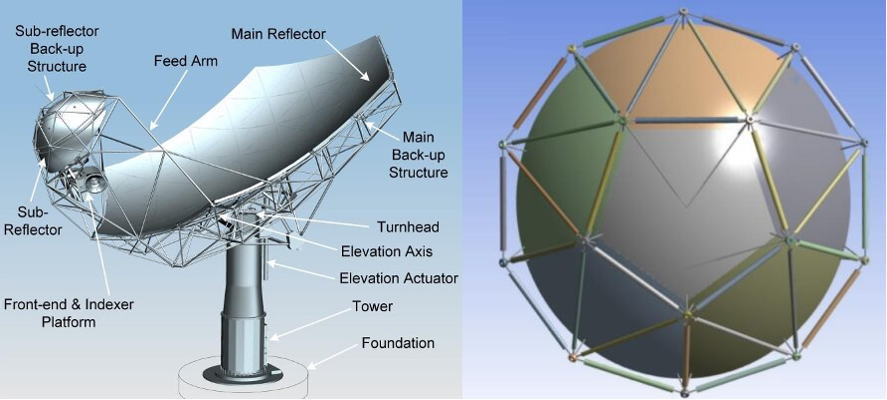High-precision technology finds applications in other industries
A high-precision synchronisation and timing system developed by the University of Granada and the Spanish company Seven Solutions (now SAFRAN) for the SKA Observatory has been applied to other sectors such as energy, finance, and telecommunications, where exact timing is also critical. The developed technology for synchronising SKA-Mid and SKA-Low telescope data ensures nanosecond-level precision.
Participating in this groundbreaking international project offers a unique opportunity to demonstrate the critical role of high-precision synchronization in distributed systems like the SKA Observatory
Spanish industry is also providing a central element of the 15-meter SKA Dish antennas, the subreflector. The antenna reflector is configured with a feed arm, a feed indexer and a passive subreflector below the main reflector. Several feeds will be integrated into the feed indexer, which allows precision positioning of a single feed at the secondary focus of the ellipsoidal subreflector.
Each subreflector is a 4.5m structure made of composite material and metallised to achieve the cutting-edge performance in structural integrity, weight, thermal stability, and surface accuracy properties required for the project. In a landmark example of technological success and industrial cooperation, Spanish companies Eosol and Compoxi have secured a key international contract to manufacture these sub-reflectors. Compoxi will lead the structural composite fabrication, while Eosol will oversee final integration and system-level delivery. The partnership demonstrates Spain’s capacity to contribute competitively at the highest level of global scientific infrastructure development and also underlines how large research infrastructures can drive regional innovation ecosystems.

Gonzalo Crespo, SKA project leader at EOSOL, said: “For EOSOL and COMPOXI to participate in this great project is exciting, as it means being part of one of the greatest scientific challenges of mankind and at the same time it is a great responsibility. We are really happy that SKAO has trusted us for this great challenge.”
Spain’s national strategy to integrate science, industry, and innovation, supports both major corporations and emerging tech companies in order to foster skills development, industrial competitiveness, and long-term economic impact. These contracts serve as a compelling example of how fundamental science drives industrial growth, innovation, and global collaboration.




